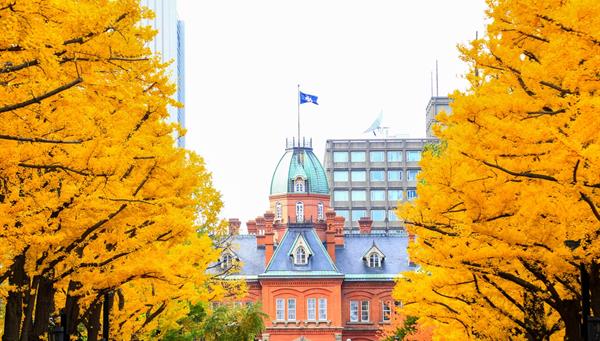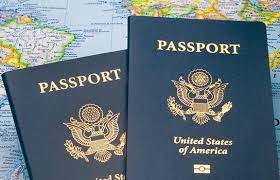The best months to visit Tokyo are March and April, as well as September and November. Autumn brings with it vibrant foliage and pleasant temperatures. Spring brings much of the same, but instead of vibrant fall colours, you’ll find cherry blossom trees in full bloom. Summer, on the other hand, is peak tourist season, as seen by long lines at museums and perplexed subway riders. Avoid this time of year if possible; you’ll face oppressive heat, humidity, and high room rates. Finally, winter weather is chilly but manageable; however, you will not be able to experience the full potential of Tokyo’s parks at this time of year.
Let’s go over this in detail…
When Is the Best Time to Visit Tokyo?
Japan, while not particularly large, is surprisingly big. The subtropical islands of southern Okinawa appear worlds away during the cold winters at Hokkaido’s northernmost tip. If you aren’t skiing, the months of March to May and September to November are generally regarded as the best times to visit the country.
That’s when visitors can see vibrant autumnal leaves or, on the other hand, the iconic cherry blossoms that look like they’ve stepped out of a postcard. Furthermore, rainfall is low during these seasons, skies are clear, and temperatures are mild.
Summer in Japan has a different pace for those who do not mind the heat and humidity. It’s a great time of year to go exploring in nature, preferably somewhere cool up a mountain or as far north as possible. In the summer, the lusciously cooler climes of Hokkaido are heaven, with rainbow-bright flower fields and a plethora of outdoor activities ranging from hiking to horseback riding.
Summer is also prime time for festivals (think outdoor beer gardens and fireworks). Winter in Japan, on the other hand, is a time for snow sports and onsen visits. Hokkaido, Japan’s northernmost prefecture, is undeniably the best place to hit the slopes, but areas outside of Tokyo, such as Niigata, are only a Shinkansen ride away and have a number of great ski resorts. Those seeking warmth should fly south to Okinawa during the winter for a more subtropical climate.
When Is the Best Time to Visit Tokyo Disneyland?
Spring and autumn are generally the best, most temperate times of year to visit attractions such as Tokyo Disneyland. It’s best to avoid national holidays, especially Golden Week, which is one of the busiest times of the year.
When Is the Best Time to Visit Tokyo to See Cherry Blossoms?
The bloom dates for visitors who are determined to visit Japan during cherry blossom season are determined by weather conditions each year. The cherry blossom season, meticulously studied and broadcasted across the country, begins as early as January at Japan’s southernmost tip. The best time to see cherry blossoms in Kyoto, Tokyo, and the surrounding areas is usually between the last week of March and the first week of April. What about cities further north, such as Sapporo? Expect to see no pink until at least May.
When Is the Worst Time to Visit Tokyo?
Because weather varies greatly by region, bad weather in one area may mean clear skies in another. The rainy season typically lasts from early June to mid-July across most of the country, including Tokyo, with the exception of Okinawa, where showers begin in early May. Meanwhile, summer in Hokkaido means warm temperatures and clear skies.
The rainy season usually comes before the extremely hot and humid summer temperatures. Cities like Tokyo and Kyoto are frequently unbearably hot and should be avoided during the peak summer months of July and August.
Because tourists from all over the world come to admire Japan’s cherry blossoms, it’s no surprise that Sakura season is the busiest time for tourism. Domestic travellers also take advantage of Golden Week (a Japanese national holiday) from the end of April to the middle of May. It’s best to avoid visiting during this time unless you’ve meticulously planned ahead because trains, hotels, and popular sightseeing spots are frequently overcrowded or completely booked.
The Cheapest Times to Visit Tokyo
Japan has traditionally been a more expensive destination, but with a flood of new hotels opening following the Tokyo 2020 Olympics, there is now a wider range of good quality, good value properties available.
Meanwhile, the country sees the fewest visitors from mid-January to March, which means more deals on airfare, hotel rooms, and activities are available.
When Is the Best Time to Visit Tokyo for Foodies?
Japan is a great year-round destination for foodies, but it is also seasonal. So, if you have a favourite Japanese dish or ingredient, it’s worth researching when to go to avoid missing out entirely. Summertime favourites include light, cool smen noodles, kakigri shaved ice, and delectable unagi eel; autumn features matsutake mushrooms, sweet potatoes, and sanma Pacific saury; winter features warming nabe hot pots, citrus fruits, and kaki persimmon; and spring features sea bream, takenoko bamboo shoots, and sakura mochi rice cakes.
Must-See Tokyo Events
Every year, Tokyo hosts hundreds of events. A complete listing can be found on the events calendar, but here are some of the best.
January
The biggest seasonal holiday on the Japanese calendar is New Year’s, and many Japanese return to their hometowns to spend time with family. With approximately 70% of the population born outside of Japan, this exodus has the greatest impact on Tokyo, and the capital’s streets are relatively quiet over New Year’s. However, it is one of the busiest times of the year for Shinto shrines. When the clock strikes midnight and the new year begins, tens of thousands of visitors line up for hours in the cold to perform hatsumode (the first prayer of the year). While this can be a memorable experience for foreign visitors, the city generally remains quiet until January 4-5, when people return to Tokyo and daily life resumes.
Other notable January events include Coming of Age Day (seijun no hi) on the second Monday, when young people who turned 20 the previous year head to city halls to celebrate their transition to adulthood, and the trains and streets fill with kimono-clad girls. The first of six sumo tournaments in Tokyo also kicks off the sumo calendar.
February
February is one of the quietest months of the year in Tokyo, with few events. The advantage is that because it is off-season, tourist attractions will be noticeably less crowded, allowing you to enjoy sightseeing in relative peace. Those who come to experience the changing seasons may be disappointed, as most flowers and fauna are not in bloom. The plum tree is an exception, with shrines such as Yushima Tenmangu hosting Plum Festivals.
March
The temperature begins to rise, and winter comes to an end with the arrival of the cherry blossoms—the most important seasonal event on the calendar. The delicate pink blossom pageantry begins in Kyushu in mid-March and gradually makes its way up to the northern island of Hokkaido (the southern island of Okinawa actually sees the cherry blossoms first in late January).
The flowers bloom in Tokyo at the end of March and last for 2-3 weeks, though only half of that time is spent in full bloom. The Japanese know how to make the most of their brief visit: sake-soaked picnics and night illuminations at parks and rivers. Daily media updates inform the public about the percentage of the bloom and the best places to view it. Seeing the cherry blossoms is an unforgettable experience, but visiting the country at the end of March and the beginning of April is one of the most expensive times of the year. If you’re willing to pay the premium, you’ll need to book early (especially in Kyoto’s old capital, where hotel rooms are like gold dust).
April
With the fall of the cherry blossoms in mid-April, the nation’s fervor gradually subsides. Baseball season begins in April, with teams playing 5-6 times per week until October. Over 20 million people follow the sport across the country, and with three baseball teams in and around Tokyo, tickets to venues like the Tokyo Dome are relatively easy to come by. With the arrival of spring, there are a number of festivals in and around the capital, with the Bunkyo Azalea Festival at Nezu Shrine and the Wisteria Festival at Kameidoten Shrine being two recommendations. See the events calendar to see what else is going on.
May
The term “Golden Week” refers to a series of public holidays that occur at the end of April and the beginning of May. Much Japanese fill in the gaps between weekends with their own company holiday (10 days paid leave is still standard at many Japanese companies, so workers must choose their days carefully) to make a week-long vacation.
Kanda Matsuri and Sanja Matsuri, two of Tokyo’s three major festivals, take place in May, and there are a number of other events near Yoyogi Park. Many of the flowers in Tokyo’s public gardens, such as Rikugien and Shinjuku Gyoen, are in bloom, making for a pleasant stroll.
June
Tsuyu (the rainy season) arrives in June. It usually lasts from the first half of June to the second half of July. Despite its name, it is better known for its grey skies and lack of sunshine (in fact, despite the much shorter days of winter, June and July still receive the least amount of sunlight). If you are visiting Japan during this time, bring a light raincoat and an umbrella.
In June, Tokyo’s third major festival, Sanno Matsuri, takes place over an 11-day period in the middle of the month, and there are several firefly events outside of central Tokyo.
July
July is the most humid month due to rising temperatures and a lingering rainy season—the kind of humidity that, on bad days, leaves you drenched in sweat and daydreaming of cold showers. Many local and summer festivals take place in and around the capital, and the fireworks season begins at the end of the month. Mitama Matsuri at Yasukuni Shrine, the Lantern Festival in Odaiba, and the Wind Chime Festival at Kawasaki Daishi are a few favourites.
Furthermore, many people wear yukata to these events in July and August, creating a uniquely Japanese atmosphere.
August
When the skies clear and the rainy season ends, the start of the firework season heralds the arrival of summer—and Japan knows how to do fireworks. During the month of Hanabi (“flower fire”), Tokyo hosts over 20 events. The events are free, but the crowds are massive, and many people arrive early to get the best viewing spots. In late August, the famous Asakusa Samba Carnival and the Azabu-Juban Noryo Matsuri are also held.
On the 15th, one of the most important Buddhist festivals, O-bon, is held. It pays homage to one’s ancestors, whose spirits are said to visit relatives homes. There are many Bon Odori Dances at shrines in Tokyo.
September
The weather cools in September, and dark clouds bring rain. Officially the wettest month of the year, it is also typhoon season, with news channels constantly updating on the path of the next major storm. Only about three hit the capital in a typical year (the south of Japan is often hardest hit), but when they do, they bring torrential downpours and strong winds that can disrupt transportation and bring the city to a halt.
Although they leave clear skies in their wake, unlike the drizzle and grey skies of the rainy season, the September downpours are not something to dismiss and head out armed with an umbrella and anorak. As a result, September is a risky month to visit Japan.
October
The typhoon season is winding down, but October remains the second wettest month of the year, trailing only September. There are no major festivals on the calendar, but the crowds of August have dissipated, so the tourist attractions will be quieter.
November
Toward the end of the month, Japan witnesses the autumn colours, the second most important natural phenomenon of the year after the cherry blossoms, and gardens such as Rikugien turn on the illuminations to showcase the colours. If you don’t mind the colder weather, November is an excellent time to visit Japan. To see the autumn colours in all their glory, plan your trip for the latter half of the month, which may overlap with early December.
December
With only about 1% of the population practising Christianity, Christmas is not a major holiday (in fact, it is a regular working day). That doesn’t stop the city’s commercial districts from getting in on the act: Christmas illuminations (done meticulously in Japanese style) can be found throughout the city, and Christmas markets pop up in parks and plazas. After Christmas, the biggest event of the year, New Year’s, is only a few days away, and many people use their personal vacation time to extend the public holiday and get some rest before it all starts again the following year.
Best Time to Visit Tokyo: Related Articles
- WHAT ARE THE BEST PLACES TO TRAVEL IN MAY IN 2023
- Tory Burch Logo: The Full Story Behind Tory’s Success
- BEST FLIGHT BOOKING APPS IN 2023
- SHAMPOO BRANDS: 21 Best Clean Wet & Dry Picks in 2023 (Detailed Review)






